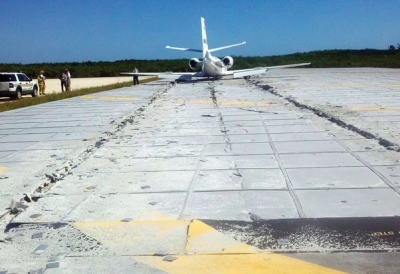
On some aircraft carriers, a ski-jump is used at the end of the runway to help aircraft take off. The jump reduces the space required to take off (which is rather limited on a ship) and allows a higher take-off weight, which means more fuel and more ammunition can be carried.
However, there are downsides too. First off, the jump puts more stress on the airframe, requiring a beefier aircraft structure. Secondly, the take-off must be a success or it will be a major failure. If the aircraft doesn’t get enough speed to take off, it will fall in the sea, or if on land, will crash into the ground. Thirdly, it forces the runway to be unidirectional. You can only land from the non-ski-jump end. Not a big problem for a ship which can turn round, but an issue for a ground-based airport that wants to land planes into the wind and has to cope with changeable weather.
For military aircraft, some of the above downsides are worth it for the additional payload and shorter take-off run. They can accept the risks. For commercial and private aircraft, the risk/return ratio is rather different. Commercial airlines give high priority to safety. They can’t accept the risk of an aborted take-off but no runway space to brake and stop on. They can’t accept not landing in the best direction for the current weather. They need runways to operate both ways as required. They can’t accept the extra maintenance and construction costs for the stronger aircraft required by a jump.
Ultimately, the airlines just don’t need ski-jumps. The world is full of long land-based airports that have more than enough length to allow even the largest jets to land. For smaller airports, there is usually less demand, so airlines can operate smaller aircraft, with shorter take-off runs, to serve those locations.
Credit : Quora
Picture Credit : Google
